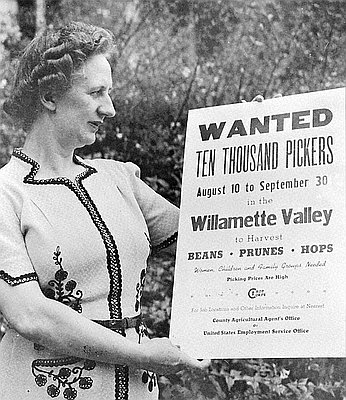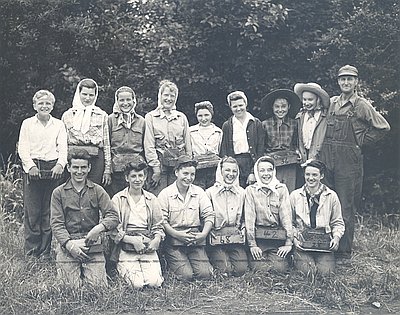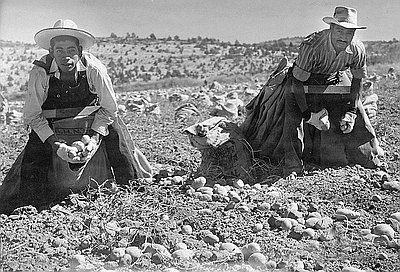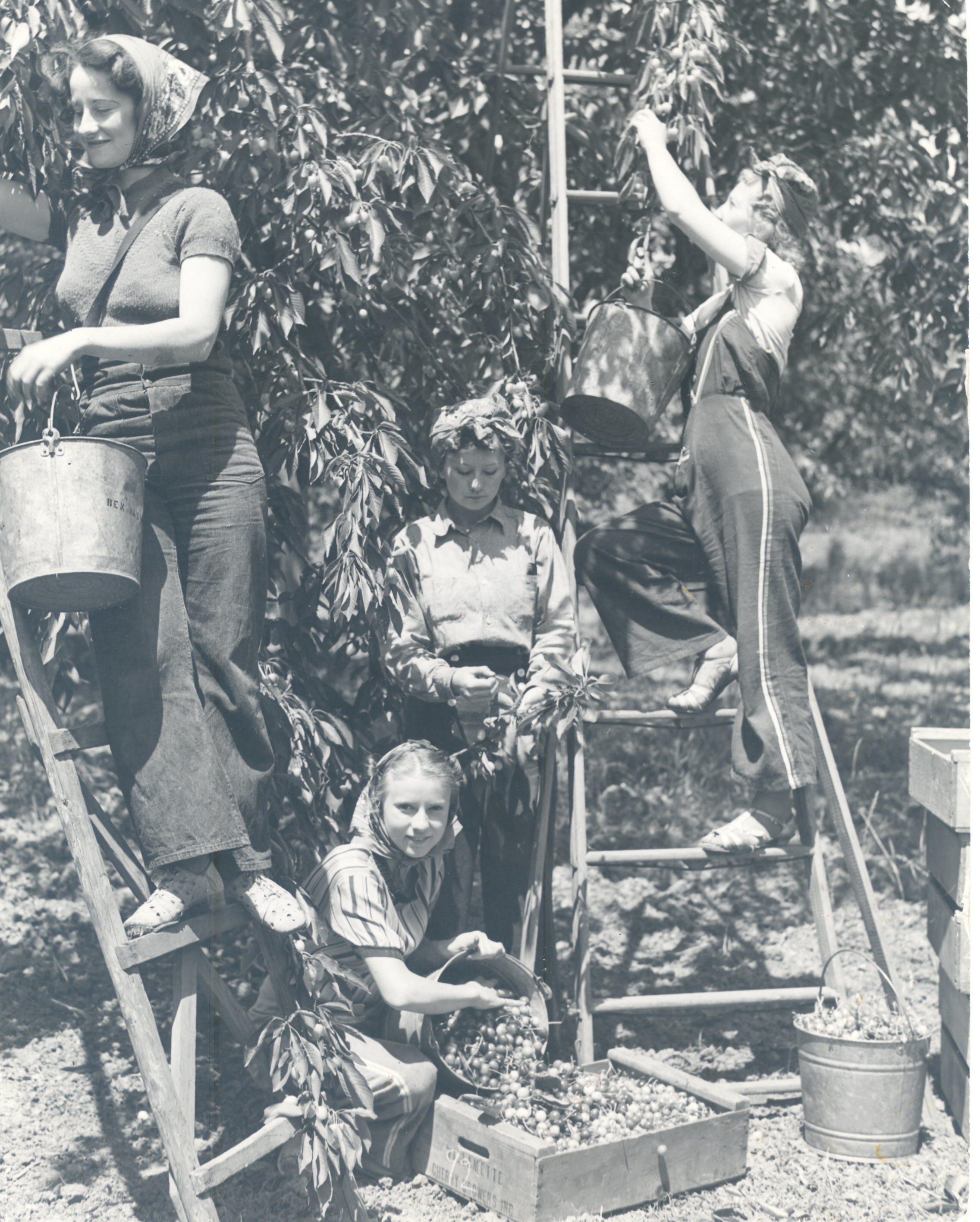- Catalog No. —
- Neg. #54961
- Date —
- July 15, 1943
- Era —
- 1921-1949 (Great Depression and World War II)
- Themes —
- Agriculture and Ranching, Government, Law, and Politics, Labor, Trade, Business, Industry, and the Economy, Women
- Credits —
- Oregon Historical Society Research Library
- Regions —
- Willamette Basin
- Author —
- Portland Oregonian
Women Cherry Pickers during World War II
For farmers and orchardists in Oregon, labor shortages during World War II threatened to leave vegetables and grains rotting in the fields and unpicked fruit on the trees. Many men were drafted into the armed forces, and workers who traditionally traveled from farm to farm during harvesting seasons were settling in the cities to work in wartime industries.
The federal government recognized the crisis and helped by creating several labor organizations to recruit people into the farms and fields. Women and children were targeted, and they signed up by the tens of thousands. Some women joined the Women's Land Army, administered in Oregon by the OSC (now Oregon State University) Extension Service; others volunteered as part of the Victory Food Program.
These young women were likely using their school break to help pick cherries at an orchard west of Salem. Portland Public Schools, among other Oregon school districts, organized "platoons" of student workers. The Oregonian reported in the summer of 1943 that seventy-five platoons, with about thirty pickers in each platoon, were working in the fields around Portland. Without their labor, Oregon's farmers would not have met the wartime production quotas set by the state and federal governments.
Written by A.E. Platt © Oregon Historical Society, 2016
Related Historical Records
-
Women's Land Army
This 1944 photograph shows Mabel Mack, supervisor of the Oregon branch of the Women’s Land Army (WLA). The WLA was part of a World War II national effort …

-
Victory Food Volunteers
In order to address the food needs of both a massive army and the over 130 million people living in the United States during World War II, Congress …

-
Mexican Laborers Pick Potatoes, 1943
This photograph shows Mexican citizens harvesting potatoes in central Oregon during World War II. In 1942, the United States government negotiated with Mexico to import workers in order …

